
31 May 5 Workplace Design Tips to Increase Workplace Wellbeing
Wellbeing in the workplace is so important. Happy offices are productive offices, and productive offices are successful ones. Businesses that champion mental health and staff wellbeing are also more likely to attract and retain talent – one of the biggest challenges facing CEOs in our post-pandemic world of work.
We believe interior workplace design – good interior office design – plays just as important a role in engendering emotional wellbeing in the workplace as positive team culture, supportive management and employee growth opportunities do.
So once you have those essential ingredients in place, how do you create a working environment to match? Whether you’re planning an office move, an office redesign or just want to make some cost-effective changes in your existing space, read on for five top office interior design tips from us that are guaranteed to have a positive impact on your team – and your bottom line.
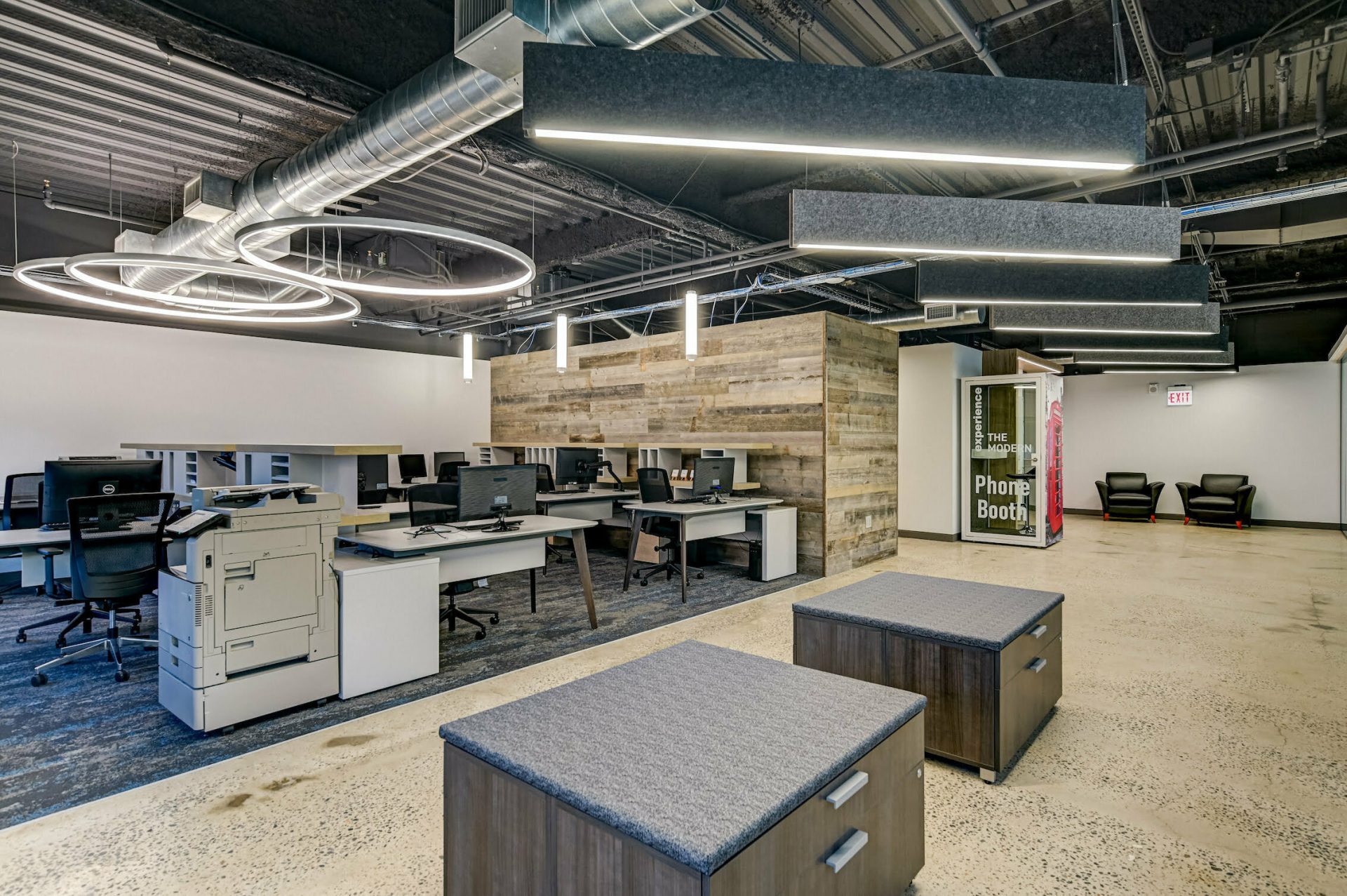
1. Incorporate Natural Light
According to a recent workplace design survey, 78% of employees say access to natural light and outdoor views in their workspace improve their overall happiness and wellbeing.
Access to the original source of vitamin D naturally has a positive impact on humans’ overall health. An often-cited University of Oregon interior design study from 2011 reported that employees who work close to natural light and good views take 6.5% less sick leave.
If you’re on the lookout for a new office space, then make lots of windows and access to outside spaces a priority. If you’re looking to redesign your space or make some layout changes, then look to see whether the current location of your workspaces can be better positioned.
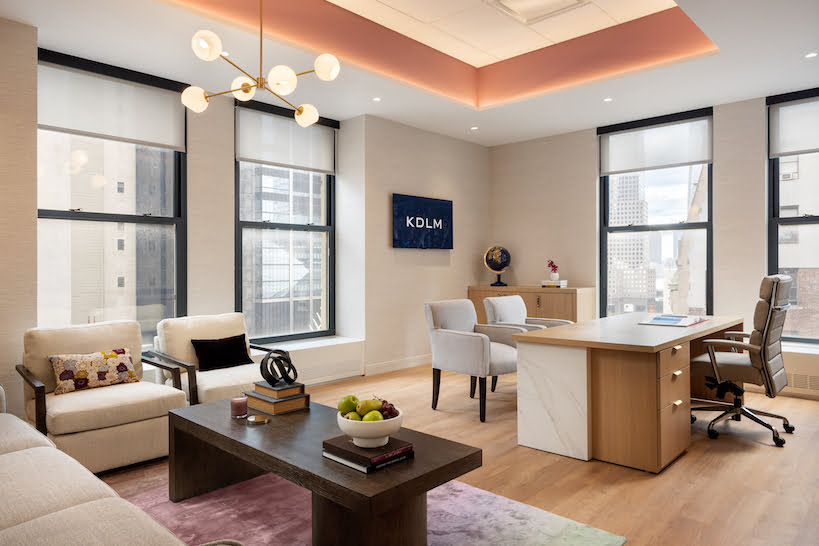
Check to see if there are any pieces of furniture, or objects (even plants) on shelves or window ledges that obstruct the light coming and reposition them if so.
Adding plants and greenery into the office is also an easy and effective way to bring the outdoors in. Numerous studies show that plants improve air quality *and* employee mood and productivity.
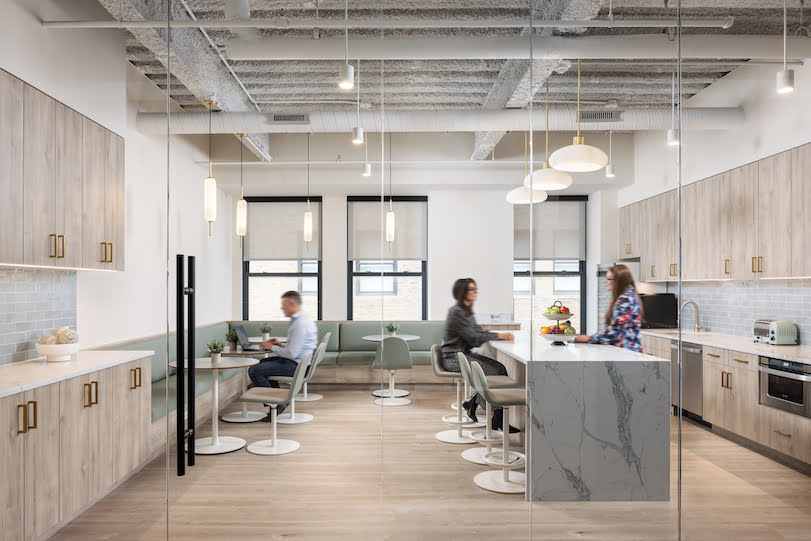
What if you’re in an office that doesn’t easily have access to natural light? Good lighting design is key so you may wish to bring in an expert for advice.
Along with adding accent lighting, you can also incorporate mirrors, greenery, reflective surfaces, bright walls and light-colored floors to make a space feel brighter. Just make sure to add in regular Vitamin-D breaks by encouraging your team to take coffee breaks and lunch breaks outside when they can!
2. Use ergonomic furniture and layouts
Ergonomically designed workstations are designed to perfectly fit the person using it. They promote good posture, prevent straining and slouching, and reduce the likelihood of pain in the muscles and joints – both of which can lead to more serious health concerns and decreased productivity.
A good ergonomic workstation set-up comprises elements including adjustable and supportive chairs and desks, foot stools, adjustable computer monitor stands and ergonomic keyboards.
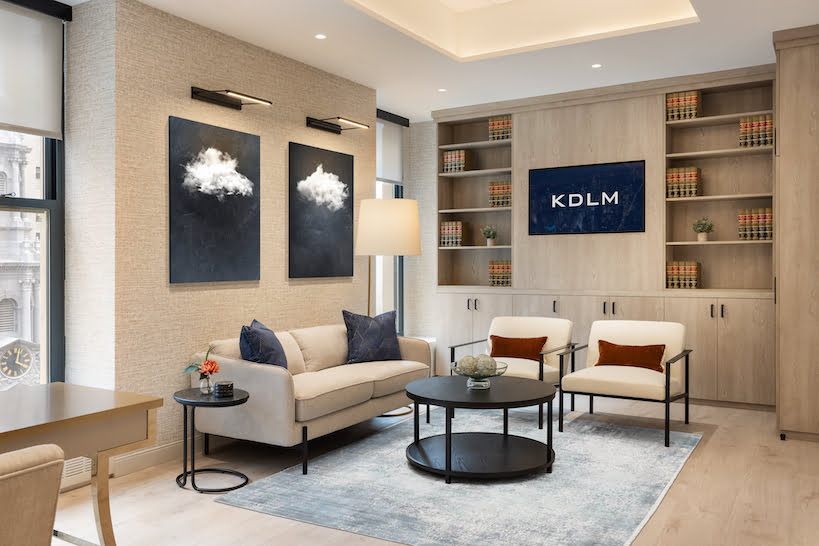
An ergonomic layout is one optimized to cater to the activities of employees – not the other way around. It’s a layout that encourages freedom of movement and flow for all employees, of all ages, neurodiversity types and abilities.
We recommend incorporating a mix of settings and furniture styles into your office – traditional ergonomic workstations, standing desks, and relaxed communal seating areas. For feel-good factor and aesthetic appeal, sofas, squishy bean bags and even swing chairs are a winner!
3. Bring in Color
Color can have a huge impact on the mood and productivity of a workplace. We recently wrote an in-depth blog on color psychology and we bring it into the workplace for brilliant results.
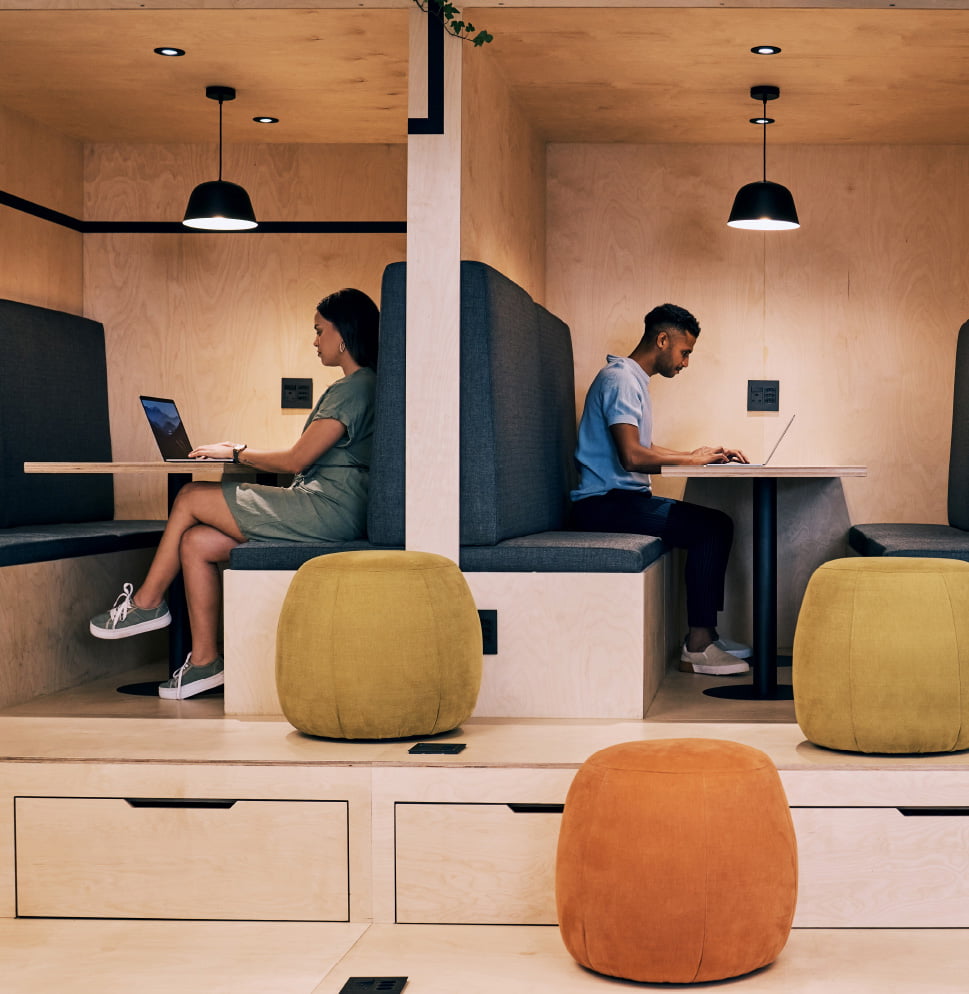
As a starting point on the subject of color – we’d always recommend holding back your paintbrush for a minute and using soothing natural colors in your main work spaces. We love pale greens, blues and stones.
Save the brightest colors – the reds and oranges – to use as pops of colors in and around your space. Equally, feel free to go bold in your breakout areas and chillout areas!
Read our Colors that Improve Workplace Results blog.
4. Hit the Right Note with your Acoustics
One of the key mechanics of smart workplace design is good acoustics.
Its opposite is one of the major causes of lower productivity, mistakes, stress, distracted staff, headaches and absenteeism.

When designing your office, it’s really important to consider sound-absorbing and sound-masking materials. Contemporary sound-absorbing wall and ceiling panels will also add to the aesthetic appeal of a workplace.
“Balance between hard and soft surfaces with the right acoustic solutions can create a workplace environment that is supportive to your staff’s needs,” says RI’s Design Director, Komel Saeed. “As a designer, I evaluate each area and room’s materials and function independently from the overall space and propose acoustic solutions as I see fit.”
Read our blog about effective workplace acoustics to learn how to get it right in your office
5. Create a Digital Detox Zone
One of the most requested office amenities by employees in today’s hybrid work landscape is a digital detox zone/mindfulness space.
Today’s workforce wants to be able to unplug, switch off, chill and recharge in the office – just like they can do when they’re working from home.
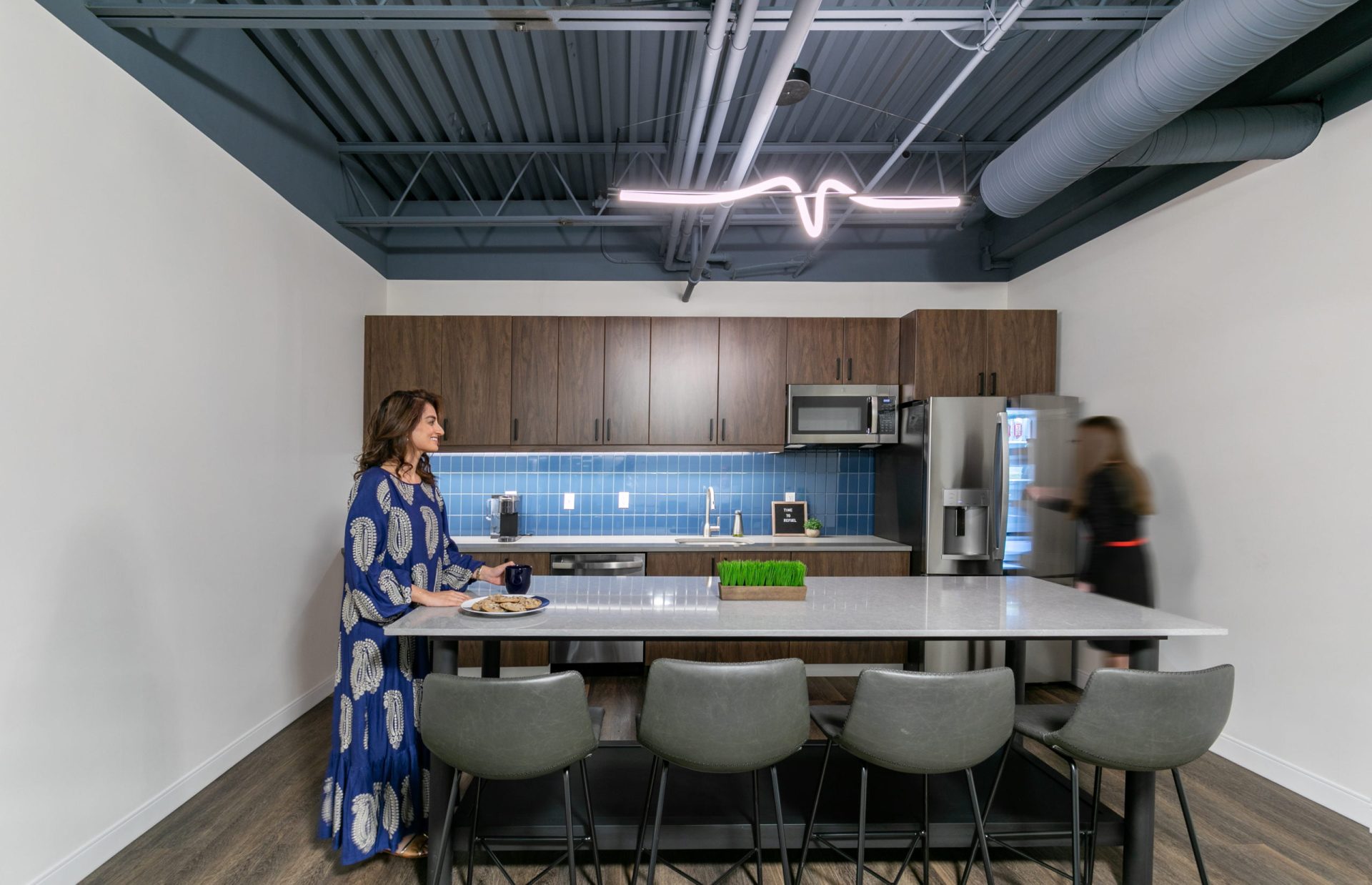
What does this look like in the office environment? It could be a dedicated meditation room, a quiet sound-proofed corner, or an outdoor wellness area with comfortable seating and lots of plants.
Offering employees spaces that enhance mindfulness, motivation, performance, job satisfaction, social relations and engagement is a winner for both employees – they’re happier, healthier and more connected – and business owners.
Happier, more engaged and productive staff have a direct positive impact on the bottom line, after all.
To find out how we support companies with hybrid-focused design, take a look at our new interior office design solution, ‘Workplace Retreat’.
In Conclusion
In today’s fast-paced hybrid world of work, effective, successful workplaces are those that soothe, not stymie, employees’ mental health. We’ve outlined in this blog a number of ways to create spaces that promote wellbeing. Namely, using natural light, ergonomic furniture and layouts, color, soundproofing and creating mindfulness and digital detox zones.
We hope you’ve found lots to inspire you in this blog – the design tips we’ve discussed form the principles of our new hybrid-workplace design solution, Workplace Retreat, which you can discover more about here.
If you’re considering a full redesign and build-out, and would like to speak to one of our experts about how to create the ideal office for your people, get in touch with RI today.



















